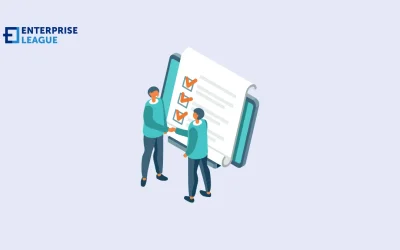As 2026 approaches, businesses are facing major change from technology to consumer preferences. For instance, AI-powered automation is growing by about 35% each year, transforming daily operations. Customers want more online options and environmentally friendly services, all while global competition keeps intensifying.
Nearly 70% of companies say traditional growth strategies no longer work on their own. For 2026, success will depend on how quickly businesses adapt, and it requires clear, practical, and actionable strategies.
Expand your payment options
With instant payment options becoming a requirement and not an option these days, customers now expect quick, easy payment choices. Mobile wallets, QR codes, and contactless cards are becoming standard across the globe. Adding flexible payment options not only gives your customers added convenience, but it also provides your business with an opportunity to attract customers who prefer online payments over cash or checks.
For example, adding crypto allows businesses to support cryptocurrencies like Bitcoin or stablecoins through secure gateways. Not only does this reduce costs, but it also speeds up cross-border sales. Clear guides for users and fast conversion to local currencies make adoption smoother.
For businesses that already support crypto, consider diversifying your options. For example, several meme coins 2025 options offer real-world utility. If your business already holds Bitcoin, for example, adding a utility-based meme token like Bitcoin Hyper offers several benefits. Bitcoin Hyper is built as a faster, cheaper layer while still backed by Bitcoin’s security. This allows businesses to move funds much faster than Bitcoin itself, join new financial apps, and even earn rewards through staking. By holding both, a company not only diversifies its digital assets but also taps into new networks and customer interest while keeping the safety of Bitcoin.
Using smarter technology
Artificial intelligence has proven effective for automation and personalization. Automation is now considered essential for business efficiency. At least 60% of businesses implemented some form of automation by the end of 2024, with some reporting an average 22% reduction in operating costs. Approximately 90% of workers report that automation increases their productivity.
AI automation helps businesses innovate faster in 2026 by improving customer connections, streamlining operations, and creating new business opportunities across sectors. Investing in reliable support, security, and scalable systems ensures that when demand increases, businesses can meet it without stress.
Agile leadership and flexible financing
Business cycles change quickly, and leadership needs to adjust accordingly. Many companies now bring in interim executives, such as short-term CFOs, when facing special projects or change. This gives them expert knowledge without long contracts or high overhead.
Financing has also expanded beyond traditional loans. Alternative funding, mezzanine loans, and strategic partnerships allow firms to raise funds in ways that match their goals. Having several funding channels helps them maintain stability even if one source tightens.
Additionally, financial strength comes from maintaining reserves. Businesses with cash buffers or diversified investments face less risk from sudden changes. This flexibility means they can act quickly on new opportunities instead of waiting for approval from lenders.
Keep the best people, grow their skills
Employees are no longer seen only as a cost but as a long-term strength. When staff feel supported and engaged, they stay longer and bring steady value. Replacing people drains time and money, while keeping talent saves both.
Training is now essential, not an added benefit. New tools, especially AI, require constant learning. Companies that help their teams develop skills can implement new methods faster. Short courses, online learning, and in-house sessions all build a stronger foundation. By treating retention as part of growth, businesses reduce risk and keep vital knowledge in-house. This makes them more prepared for 2026 and beyond.
Expand your market reach or product
Relying on one stream of income can be risky. Businesses that diversify reduce that risk and find new ways to grow. Adding a new product line, testing new regions, or adjusting services for different groups spreads opportunity.
Partnerships create additional paths forward. Working with firms that already have the technology or reach can open doors that would take years to build alone. For example, a local company might join with a global platform to gain access to new buyers instantly. By broadening reach, businesses protect themselves from downturns in one area while building new long-term gains.
Turn customer experience into your advantage
In 2026, service is as important as price or product. Customers remember how they are treated, not just what they buy. Fast replies, smooth websites, and positive reviews drive repeat sales and word of mouth.
Online strategies and tools should be included. For instance, search engine optimization (SEO), link building, social media marketing, and targeted online ads help businesses stay visible. When paired with reliable service, this builds loyalty that leads to retention. A focus on customer experience ensures not just one sale but many over time. It is a proven growth driver as any new product.
Make sustainability your priority
Green practices are no longer optional, since customers and investors expect them. The global market for green services is already worth about $600 billion and is predicted to more than double by 2030, reaching $1.3 trillion. In the UK, for example, consumer sustainability sentiment is strong, with at least 84% of British consumers taking steps toward more sustainable living in 2025. Despite the demand for greener services, only 16% feel brands are doing enough. This creates opportunities for companies to innovate and differentiate through sustainability initiatives.
Businesses that manage supply chains responsibly, cut waste, and use fair labor practices gain trust. They are also better positioned to secure financing or build strong partnerships. Clear reporting also matters. Showing how goals are met, rather than just claiming them, helps win confidence. Some even gain cost savings through energy efficiency or smarter resource use. The reality is that sustainability is now part of smart business planning, connecting long-term trust with day-to-day savings.
Conclusion
Finding steady growth does not mean changing everything about how a business runs. It means taking clear and practical steps that build results over time. The year ahead will reward companies that invest wisely, prepare early, and stay flexible when conditions shift. These approaches give businesses a useful set of tools, proving that growth in 2026 is possible even with fast changes in the economy, technology, and customer needs.
More must-read stories from Enterprise League:
- Learn how to create effective customer journey maps for business success.
- Discover powerful automation tools that can streamline your business operations.
- Master essential financial management strategies to grow your company.
- Explore proven customer retention strategies for long-term business growth.
- Learn valuable tips for building your brand effectively.





